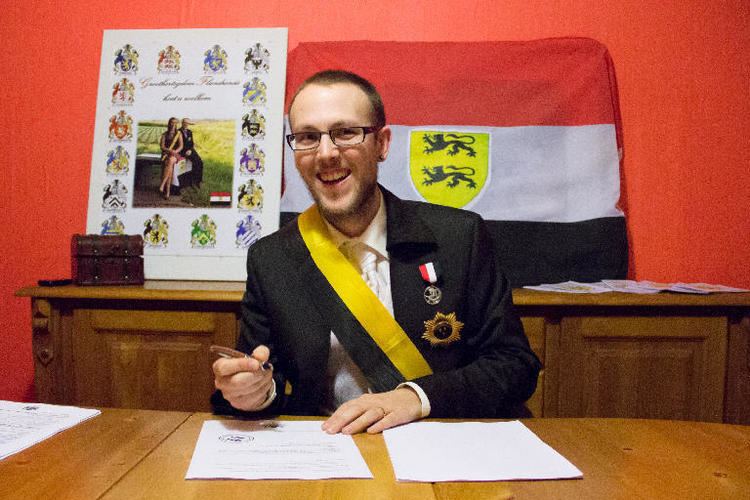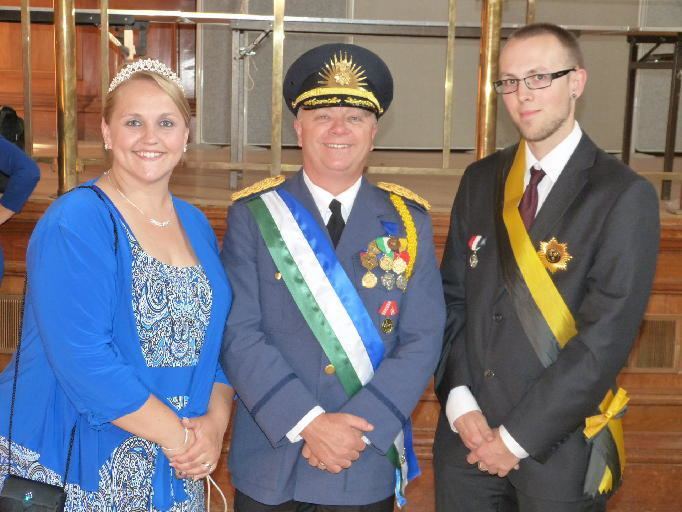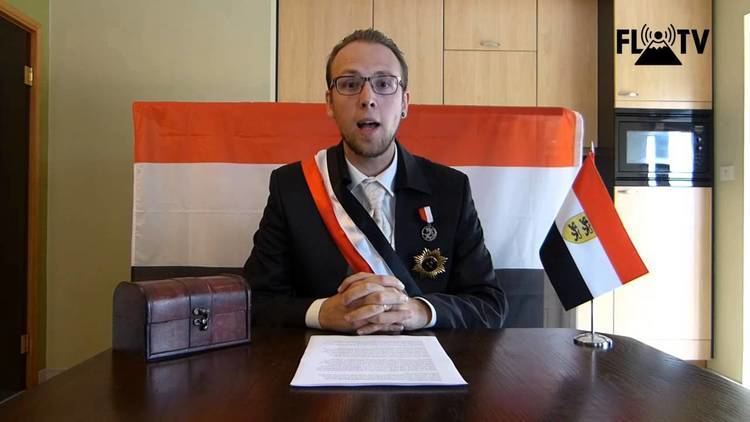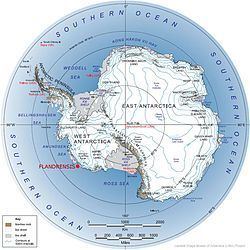Flag Coat of arms Area 14,890 km² | Status Current Purported currency Flandri Founded 4 September 2008 | |
 | ||
Demonym Flandriaan, Flandrensian Organizational structure constitutional monarchy | ||
National anthem of the grand duchy of flandrensis
The Grand Duchy of Flandrensis (Dutch: Groothertogdom Flandrensis) is a micronation with claims over some territories of Antarctica, which was founded in 2008 by the Belgian Niels Vermeersch. Flandrensis is not recognised by any country or government, nor is it their intention to be recognized as a country.
Contents
- National anthem of the grand duchy of flandrensis
- History
- Territory
- National symbols
- Micronational nobility
- References

History

The Grand Duchy of Flandrensis was founded on September 4, 2008. The Micronation is inspired by the medieval County of Flanders (Pagus Flandrensis). Flandrensis is regarded by the founder as a hobby-micronation, still the micronation has its own identity cards, currency, newspaper, constitution and national anthem. Flandrensis is also a political simulation with political parties like the APPF (pirate party), DRP (royalist), NPF (nationalist), FDUP (unionist), FL-AL (solidarity), Lijst Govaert (liberal) and L&S (republican) and organises yearly elections. Professor Alastair Bonnett of the University of Newcastle described Flandrensis as an example of a micronation that is inspired by a city council in which young people learn to make decisions. The founder also describes Flandrensis as a cultural organisation. In 2012 the micronation is composed of 128 citizens from 28 different nationalities Outside the internet the activities of Flandrensis are restricted to the region around Roeselare but the official embassy is located in the West-Flemish town Langemark. Flandrensis has also a Commonwealth that unites only Dutch-speaking micronations: the Grand Duchy of Flandrensis, the Principality of Arkel and the Duchy of Campinia. Flandrensis has been mentioned in Belgian regional media like the Krant van West-Vlaanderen and Roeselare TV. After the participation of Flandrensis in Polination 2012 (2nd International Conference on Micronations on July 14, 2012 at London) the micronation came to the attention when the Belgian newspapers Het Nieuwsblad, Het Belang van Limburg and Gazet van Antwerpen published an article about Flandrensis as part of a reportage on European micronations. In 2015 Flandrensis was also present on the 3rd International Conference on Micronations in Perugia. Flandrensis is one of the few micronations whose coverage of the elections were published by local media. In 2014 the micronation was the theme of the television show "Normale Mensen" on the Belgian channel Één. The capital of Grand Duchy of Flandrensis is Giddis.
Territory

Flandrensis is regarded by the founder as an ecological venture, to raise awareness on ice melting. Flandrensis has no intentions to visit their claims. The territorial claims of Flandrensis are a statement to the international community and they claim that the micronation is the only country in the world that doesn't want any people on its territory. On the basis of an interpretation of the Antarctic Treaty (1959), Flandrensis claims five islands off the coasts of West Antarctica: Siple Island, Cherry Island, Maher Island, Pranke Island and Carney Island. Niels Vermeersch sent letters to the United Nations, the European Union and to the nations who signed the Antarctic Treaty to inform them of his claim. All of these countries ignored Niels and his claim. Because of the claims, a diplomatic conflict with the micronation Westarctica arose in 2010, this resulted in the creation of the Antarctic Micronational Union (AMU). Coverage of this conflict appeared in the Dutch Columbus magazine, the Croatian newssite Telegram and the French book Les Micronations. In 2010 the on-line Russian newspaper Chastny Korrespondent (Private Corresepondent) published an article about Antarctic micronations and described Flandrensis as one of the most "resonant" micronations on Antarctica.
National symbols

The flag of Flandrensis is inspired by the first Belgian flag of 1830. The original Belgian flag's yellow band has been replaced by white which symbolises a new beginning. For the same reason there are also two lions on the coat of arms, based on the Flemish lion.
Micronational nobility
In 2015 the Belgian author Julien Oeuillet published the book "Le business des vanités: enquête sur les arnaques à la noblesse" about the subject of fake nobility and scams. The book mentions several micronations like Hutt River, Araucanía and Patagonia and Flandrensis. The author described the micronation Flandrensis as an alternative and humoristic way to get a title of nobility, but that nobility in the micronation only exists because of the medieval character of the micronation and not from ambition to create titles. Neither the founder nor the “citizens” use them outside the community of micronations. Although those titles are considered real and legal, because those are not Belgian noble titles, but the Flandrensisian ones. The micronation does not sell any noble titles.
